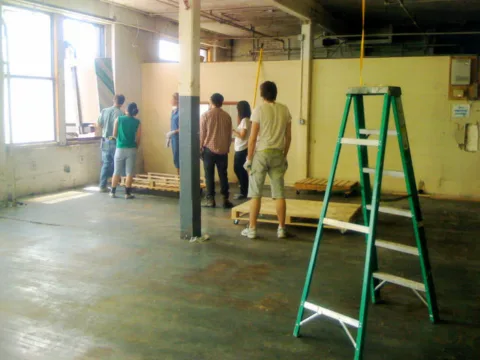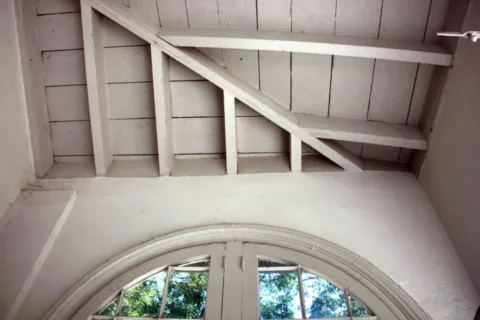While it’s exciting to embark on a massive remodel, there are often hiccups that pop up along the way.
Removing a load bearing wall might be one of the biggest!
You might think that you can knock down any wall in your house to make more space, but that’s not wise.
Some walls are there just for design and aesthetic layout, while others are supporting a massive amount of weight and keeping your home standing — literally.
These support walls are known as load bearing walls. How can you tell which walls are safe to remove and which ones are not?
Here are 5 ways to identify a load bearing wall:
#1 – Check the foundation.
Your foundation might be a concrete pad, or you might have a basement. This is the first place to start looking for load bearing walls.
You’ll want to look for any walls that actually rest on the foundation — those are the load bearing walls.
#2 – Look for perpendicular walls.
The next thing you want to look for are the floor joists — which can usually be identified from the basement.
Joists are horizontal structures that provide support to the floors. The joists can usually be found between beams, foundations, and walls.
- Walls that are parallel to the joists are not considered load bearing.
- Walls perpendicular to the joists are usually load bearing.
#3 – Locate the walls in the center of your home.
Much of the support of a house’s framework rests in the center of the home — especially when it comes to the roof.
If you have any walls or pillars that are close to (or in the exact center of) the house, they are likely to be load bearing.
#4 – Inspect the blueprints.
If you’re having difficulty determining which ones are load bearing walls, you can always go to your local county records office and request the original blueprints of the house.
A load bearing wall should be easily identifiable on the blueprints.
You’ll want to take into account any remodeling that has occurred to the home after it was originally built.
Even with the blueprints, you might need professional help decoding what they mean and which walls are safe to remove.
#5 – Consult a contractor.
If you’re really stuck determining which walls are load bearing and which ones are not, your best bet is to hire a professional contractor.
Many contractors will offer a free estimate for a remodeling project. During the free estimate, you should be able to find out which walls will give you the most problems. You can then decide if you want a contractor to do the remodel for you or if you want to handle it yourself.
Moving a load-bearing wall is best left to a professional with a considerable amount of construction experience.








